This post originally appeared on the Burlington Science Center Blog
I dropped my car off last week across the street from the BHS football field. As I walked down the entrance road to the school, I couldn’t help but notice the beauty of fall that surrounded me. It was cool and crisp. The fog had started to lift and the plant life was covered with dew. I found myself in awe of nature, taking pictures and identifying local plant species. I felt fortunate to live in an area that showed such dramatic changes with the seasons. Here is some information and photos from my walk.
I dropped my car off last week across the street from the BHS football field. As I walked down the entrance road to the school, I couldn’t help but notice the beauty of fall that surrounded me. It was cool and crisp. The fog had started to lift and the plant life was covered with dew. I found myself in awe of nature, taking pictures and identifying local plant species. I felt fortunate to live in an area that showed such dramatic changes with the seasons. Here is some information and photos from my walk.
Spotted Jewelweed: Jewelweed is a wetland plant which prefers the shade. It’s nickname is the “touch-me-not” plant, due the fact that its seed pod explodes open when it is touched. Jewelweed is known as an antidote for posion ivy (crush and rub the liquid to sooth itching). It is also visited by several nectar-loving animals including bees, butterflies and birds. I particulary love its flowers.
Northern Catalpa Tree: This tree is deciduous with large, heart-shaped leaves that can grow up to 60 feet tall. It prefers moist soil and has very light, but strong wood. What I noticed most about this tree was the almost 2 foot long, thin seed pods, which resemble a long string bean! European settlers used this tree for fence posts, railroad ties and fuel.
Bittersweet: This is an invasive species from Asia that smothers our local plant life. It is a vine that can grow up to 60 feet tall and 6 feet across at the base. It produces very beautiful berries (fruits) which are eaten by birds (hence seed dispersal).
Common Reed/Phragmities: Phragmities is another example of an invasive species, which originated from Europe and Asia. It invades wetland areas and takes over an area into a large group called a “colony.” It makes a soft bristle sound as the reeds blow into the wind.
Poison Ivy: I always teach my students that poison ivy is not always green & red or only green. Fall is a perfect time to observe that this plant can be a variety of colors. Remember the saying “Leaves of three, let it be.”
Cattail: This tall, aquatic plant is a member of the grass family. It prefers shallow water and is known for its sausage-like flower. This plant is highly edible and the entire plant can be eaten depending on the time of year. Native people used the leaves as siding for their homes and others used the seed fluff to dress wounds.
Pokeweed: Pokeweed is a perennial herb with magenta stems and clusters of dark purple/black berries. The entire plant is mildly poisonous so be sure to keep away children and small pets. Pokeweed has long been thought to have medicinal value. At one time it was used to cure everything from boils to acne. Today, Pokeberry is being researched as a possible treatment for cancer. According to the American Cancer Society, a chemical found in pokeberry juice has been used to successfully treat cancerous tumors in laboratory mice. The chemical is also being tested to determine if it can protect cells from HIV and AIDS.
Burning Bush: Burning Bush is a favorite landscaping shrub, due to its vibrant red color in the fall. This invasive plant is from Asia and has been banned from sale, trade or distribution all across MA. It can easliy thrive in most habitats and can be harmful to the ecosystem.
Maple Tree: The spledor of maple trees are the colors their leaves change during the fall. This is one of my favorite tress at BHS during the fall. The foliage of trees changing are amazing!
While on this walk, I felt I was living “in the moment,” surrounded by the beauty of nature and our earth. Life goes by so fast sometimes, so please remember to take the time and explore the amazing world around you.

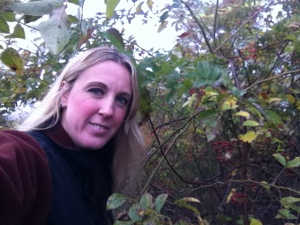
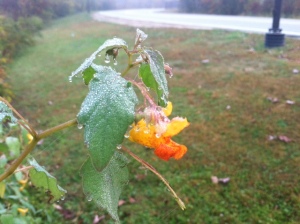
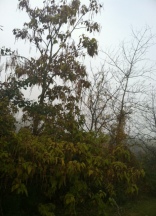
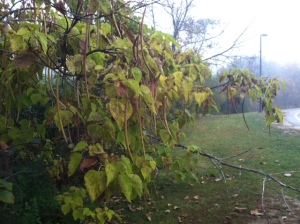
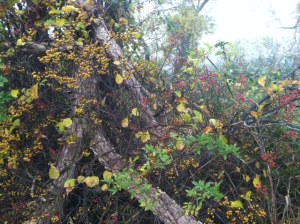
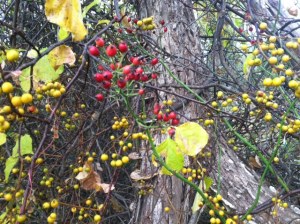
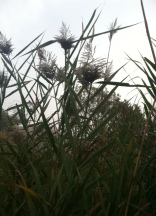
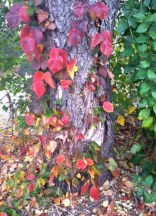
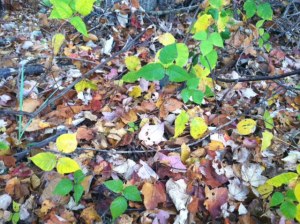
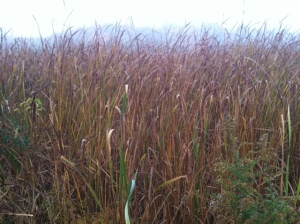
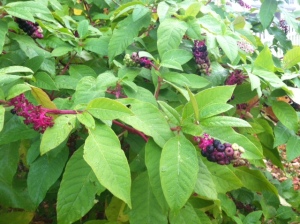
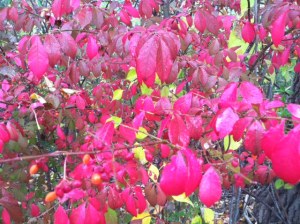
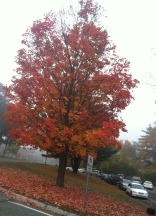
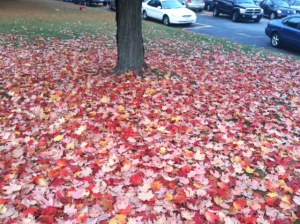
No comments:
Post a Comment